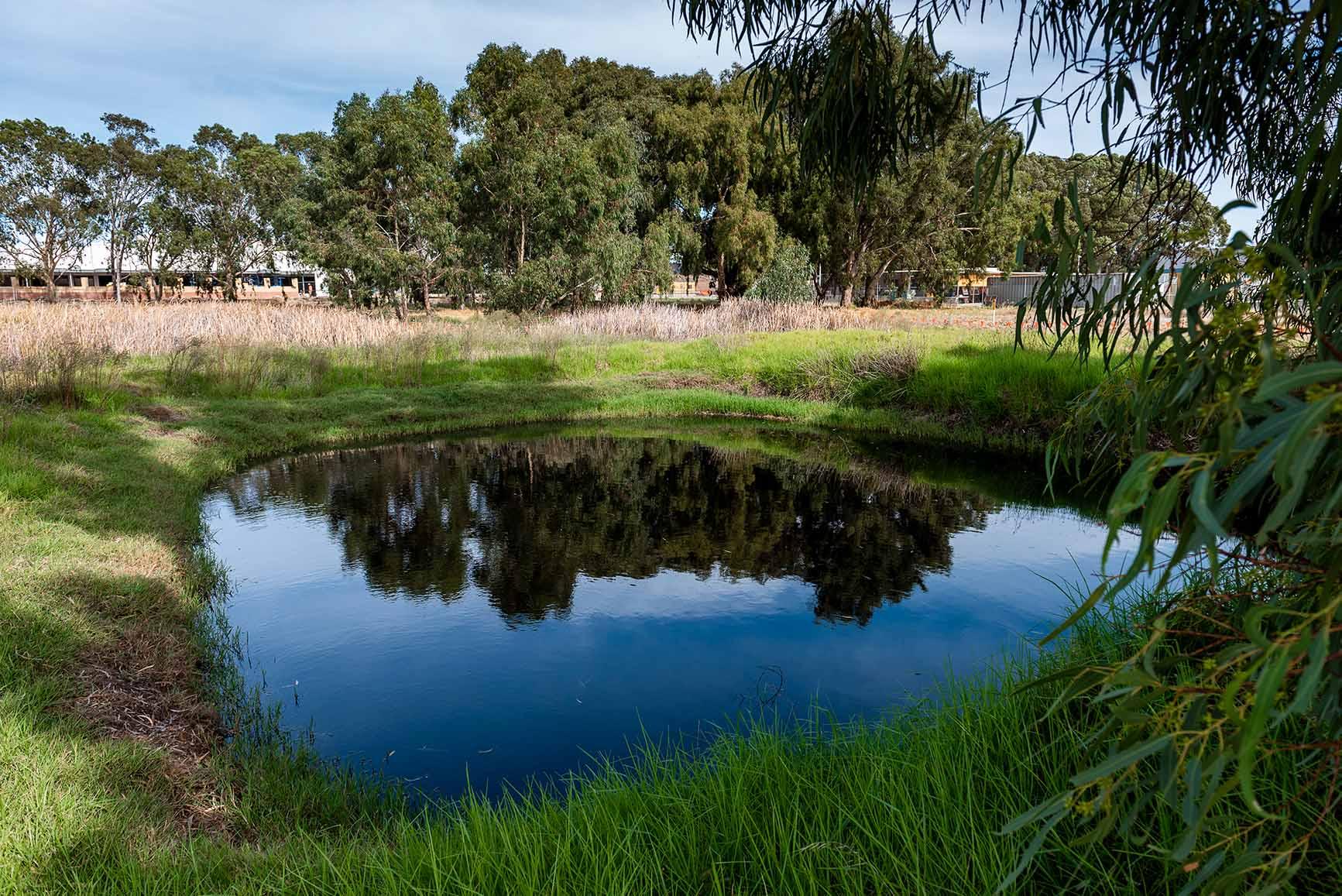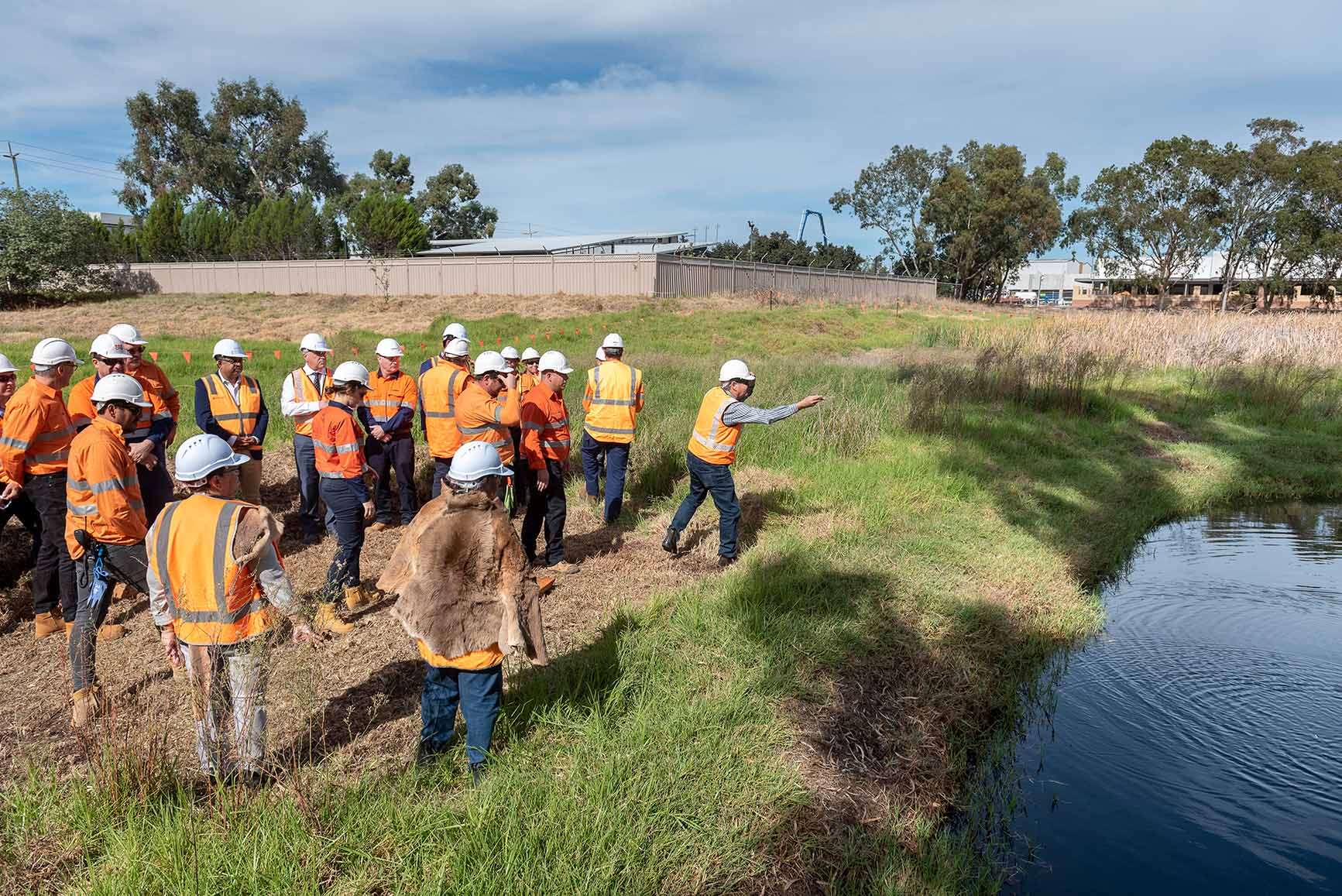
Noongar cultural heritage drives innovative urban design
METRONET’s Gnarla Biddi (Our Pathways) Strategy takes a structured approach to identifying cultural features intrinsic to the place values of its many projects in Western Australia. The significance of the Nicholson Road waterhole relates to its Aboriginal Dreamtime association with the path travelled by the Rainbow Serpent, or Waugal, when the Earth’s land and waters were created.

Noongar Aboriginal culture has been acknowledged and preserved by enhancing an existing waterhole at the Nicholson Road Station, one of two stations being built as part of METRONET’s Thornlie-Cockburn Link Project in Perth, Western Australia.
Noongar people believe that the waterhole is an expression of a place where the Waugul, rose from beneath the ground and formed a water body (along with all the other surrounding water bodies, including the Bannister Creek Wetlands and the Swan and Canning rivers). The Waugul left behind some ‘whiskers’ in the form of bullrushes and sedges that now surround the waterhole.
Under the Land Access and Sites Management engagement stream of the Gnarla Biddi Strategy, the waterhole’s cultural significance was identified early in the project and it influenced plans to avoid impacts and to make it a feature of the area. AECOM, working with the METRONET team and its NEWest Alliance, liaised with METRONET’s Noongar Reference Group to understand the waterhole’s significance and preserve and enhance its cultural and natural features.
As a result, the existing waterhole will be enhanced, but without changes to its boundaries and overall water levels. Through consultation with the Noongar Reference Group, the existing bullrushes and reeds, or ‘Waugal whiskers’, will be transplanted to the areas surrounding the waterhole. The car park drainage design was also adapted to protect the qualities of this special place and incorporate it into the urban design of the station precinct.
Urban design to improve water quality
As well as being a place of cultural significance, the waterhole is a critical natural resource with established environmental values protected in line with METRONET’s Sustainability Strategy and Water Sensitive Urban Design (WSUD) principles. WSUD principles and total water cycle management values were applied in the car park drainage design. This involved the collection, compensation, settling and quality treatment of the new station’s car park stormwater runoffs to prevent infiltration into the groundwater.
The area around the waterhole will be smoothed and levelled to reach the new car park levels and it will be revegetated with native plants. Valuable topsoil material will be retained and bullrushes and reeds transplanted, which will help improve water quality. All existing trees at the waterhole will be retained.
Enhancing the sense of place
Various community benefits were also considered in the design to create a space for people to enjoy, including improved amenities, urban tree canopy maintenance and installing benches for seating. The design has also enhanced the amenity of the area by adding interpretive signage, prioritising tree shade and incorporating educational values.
